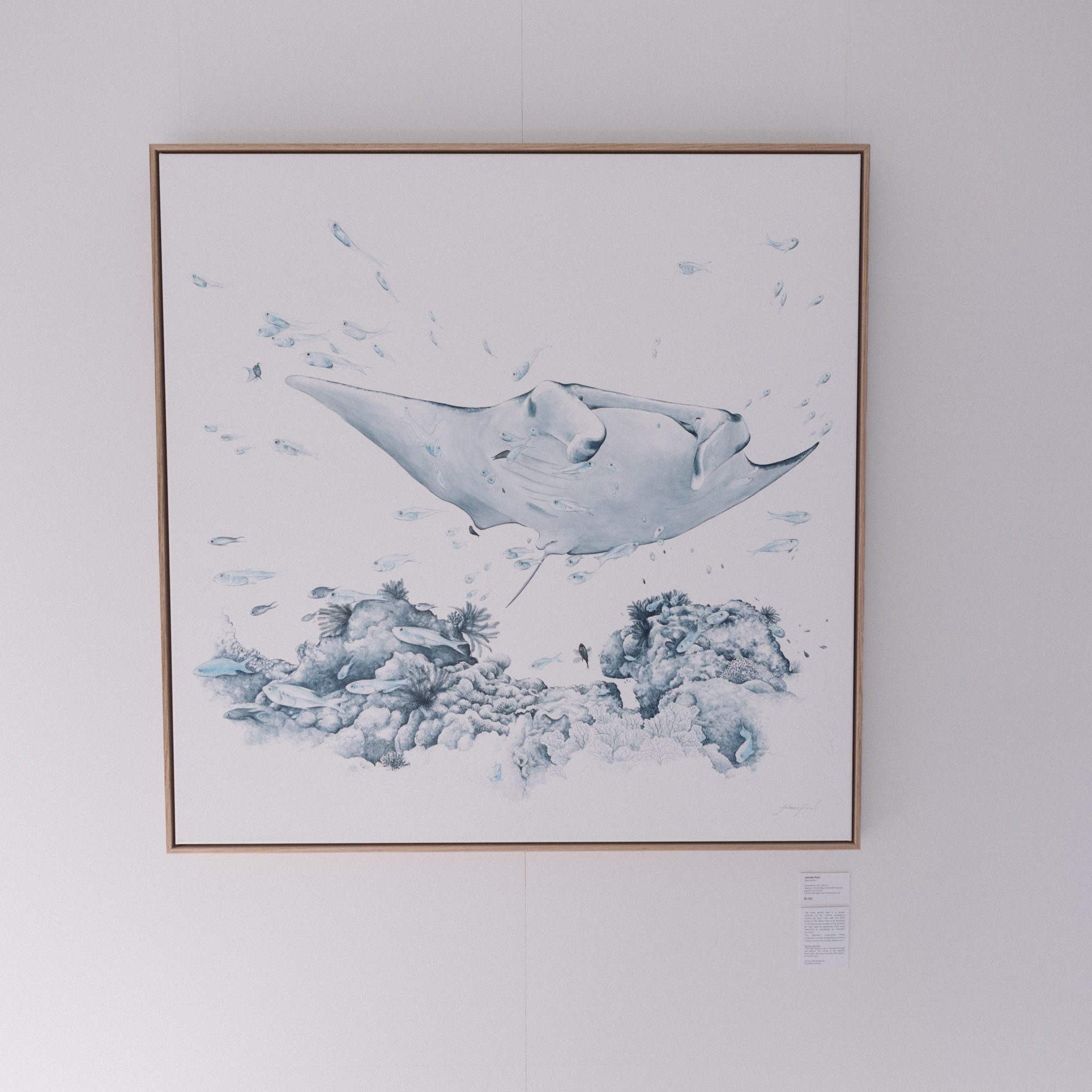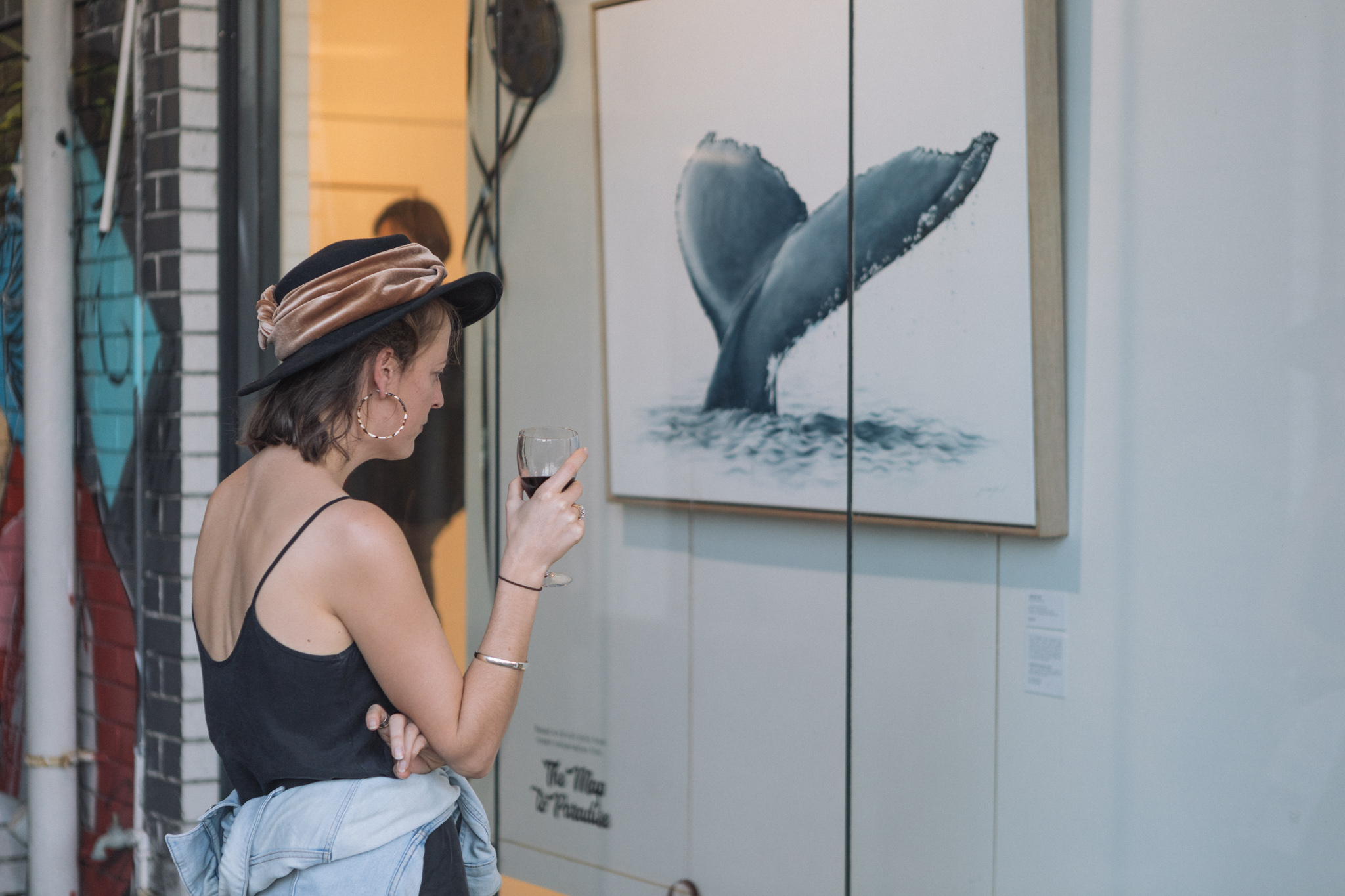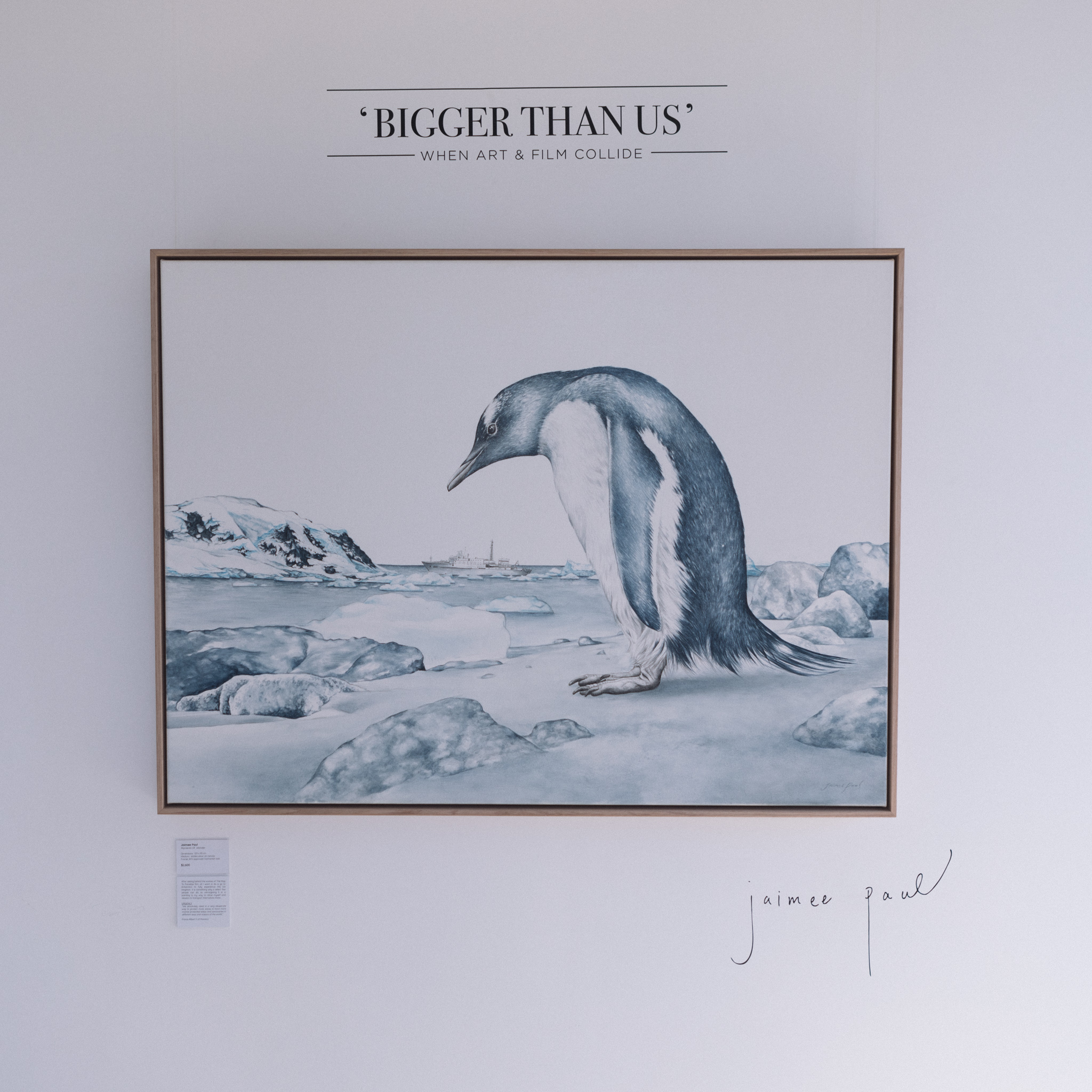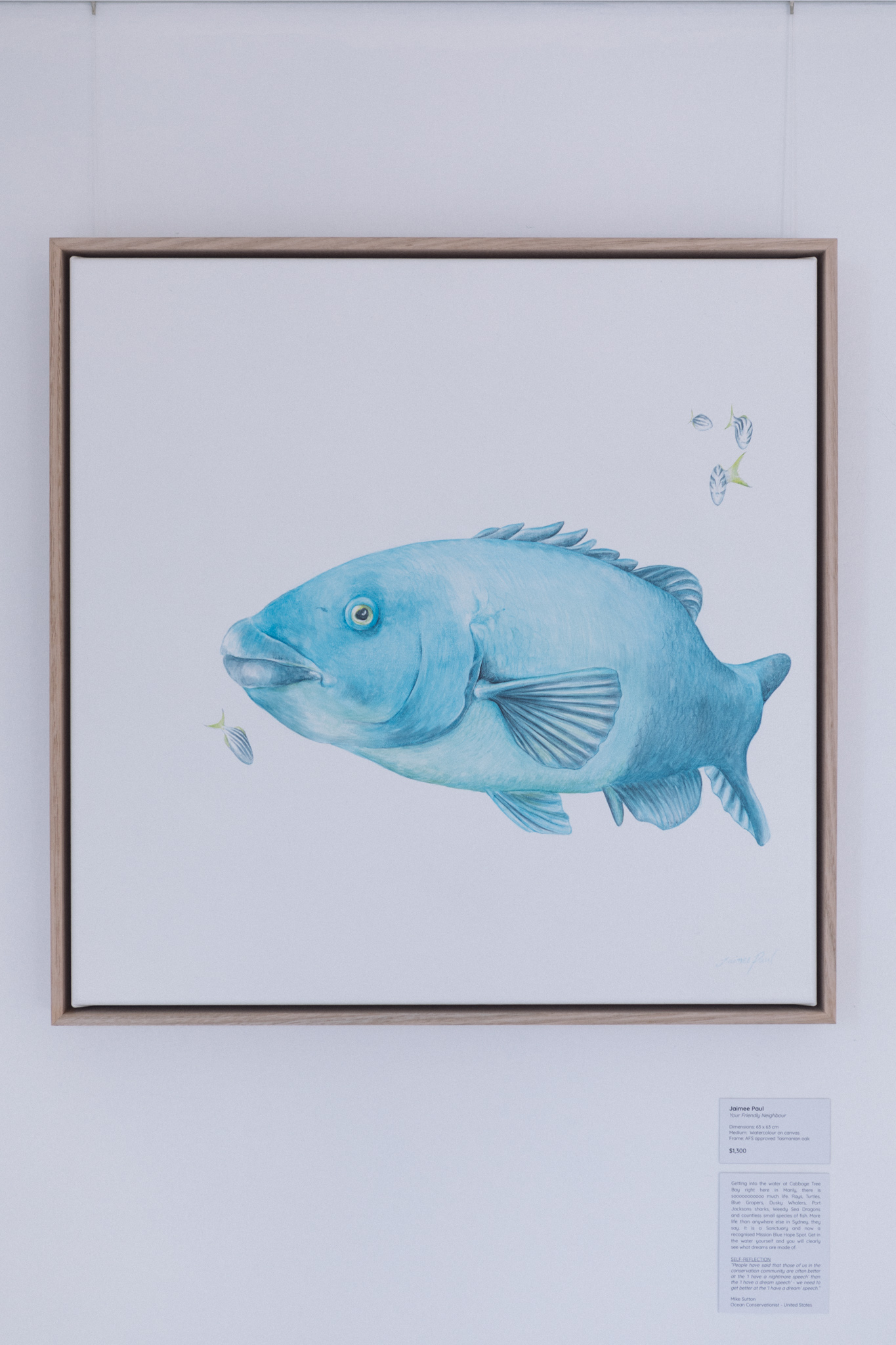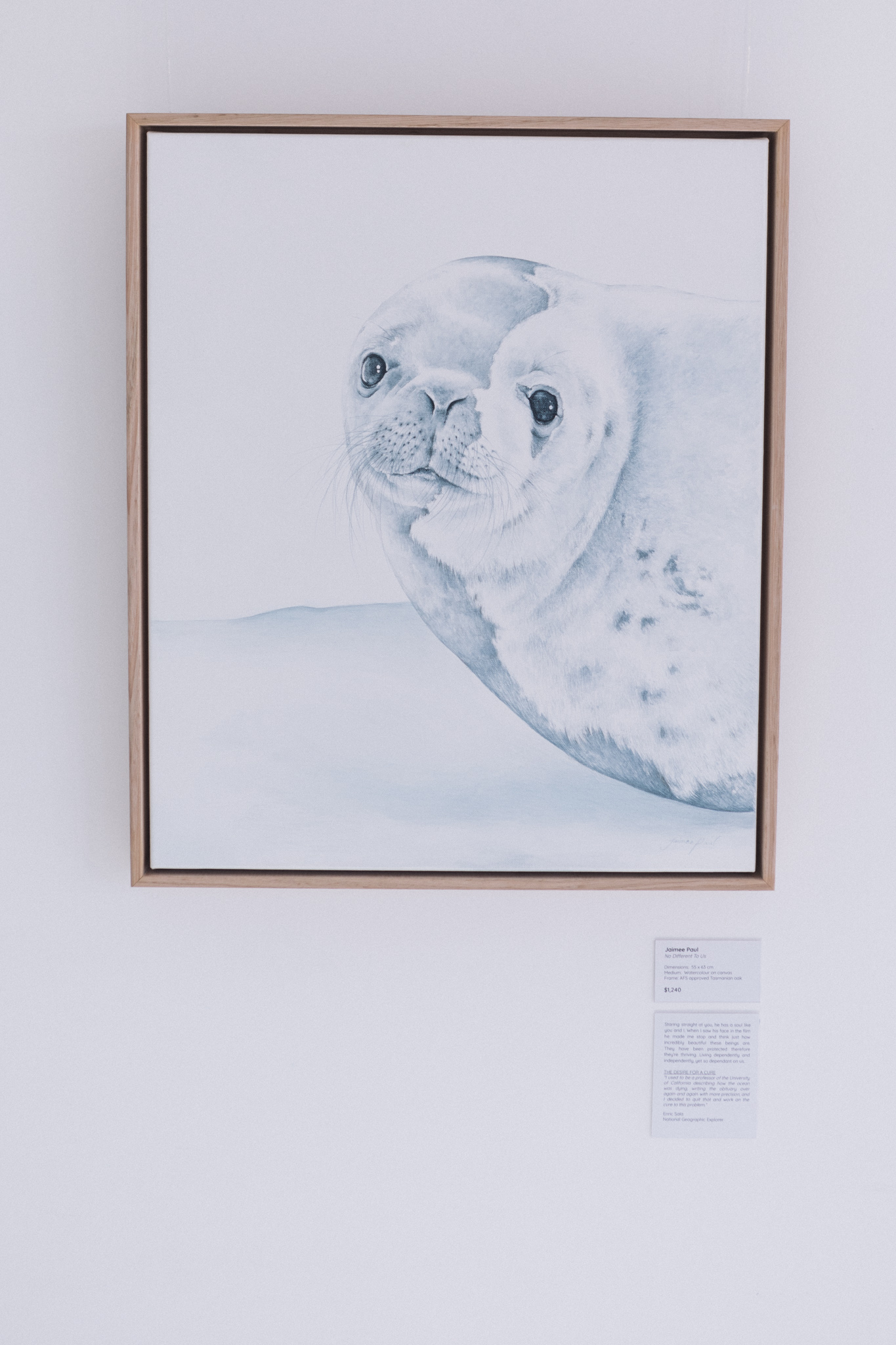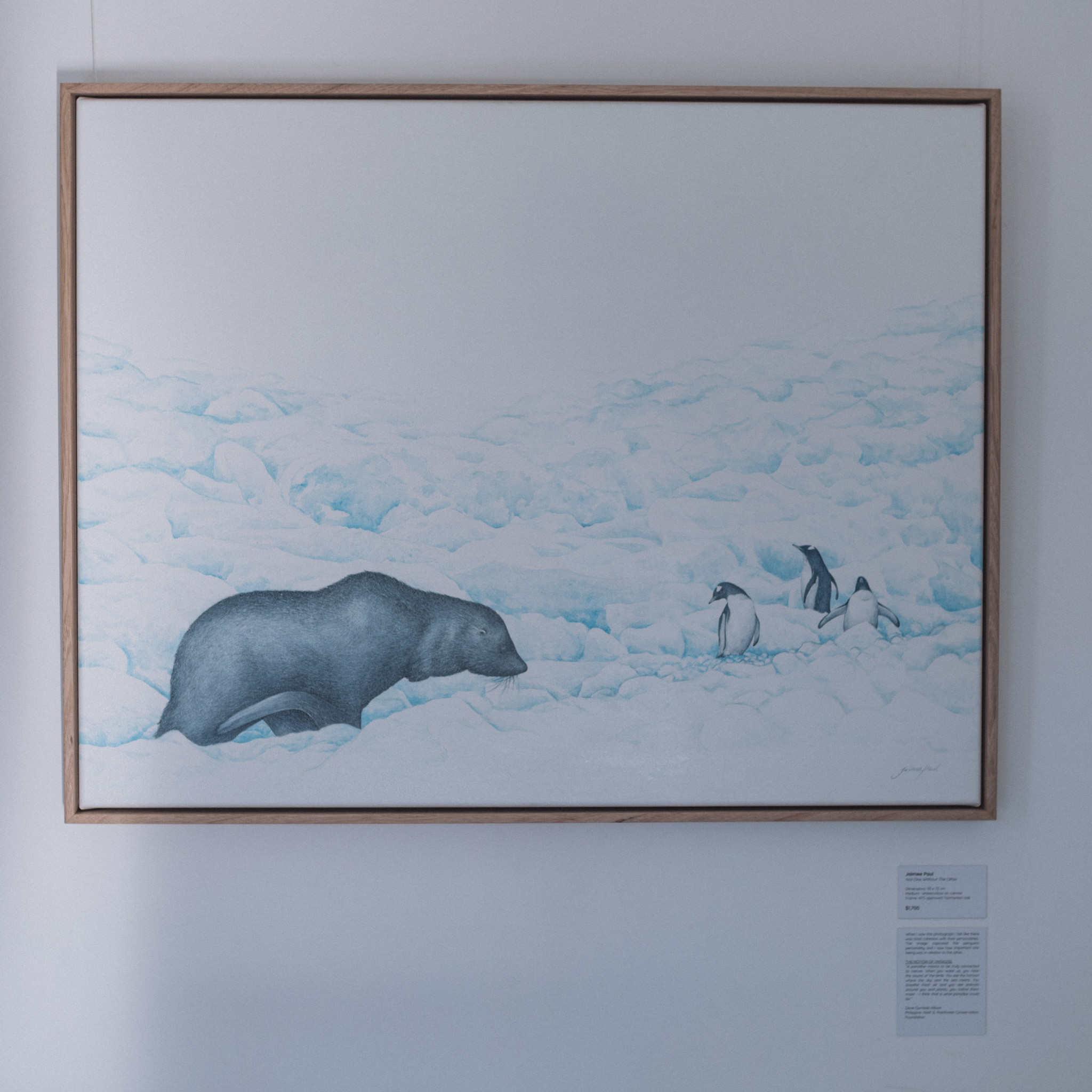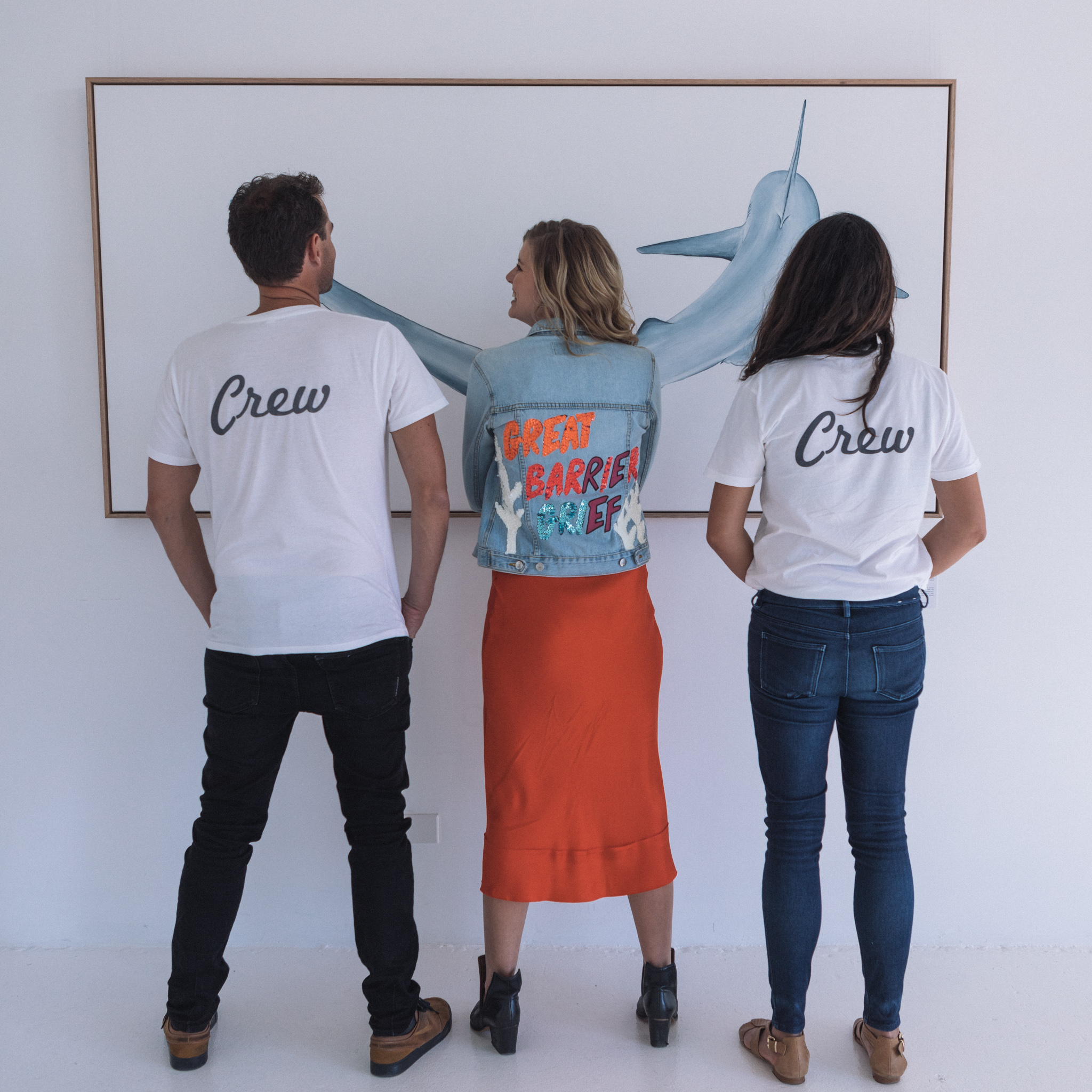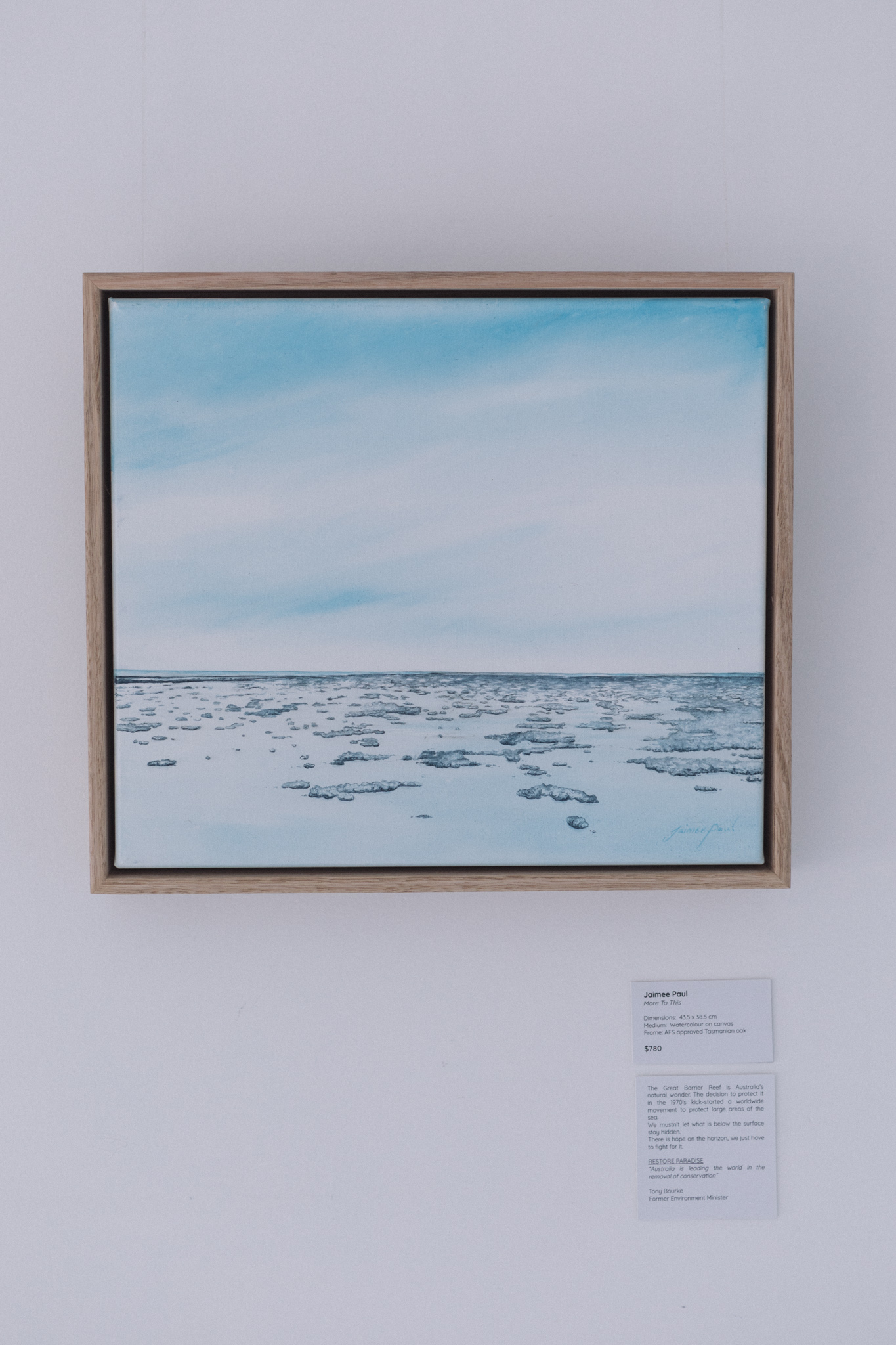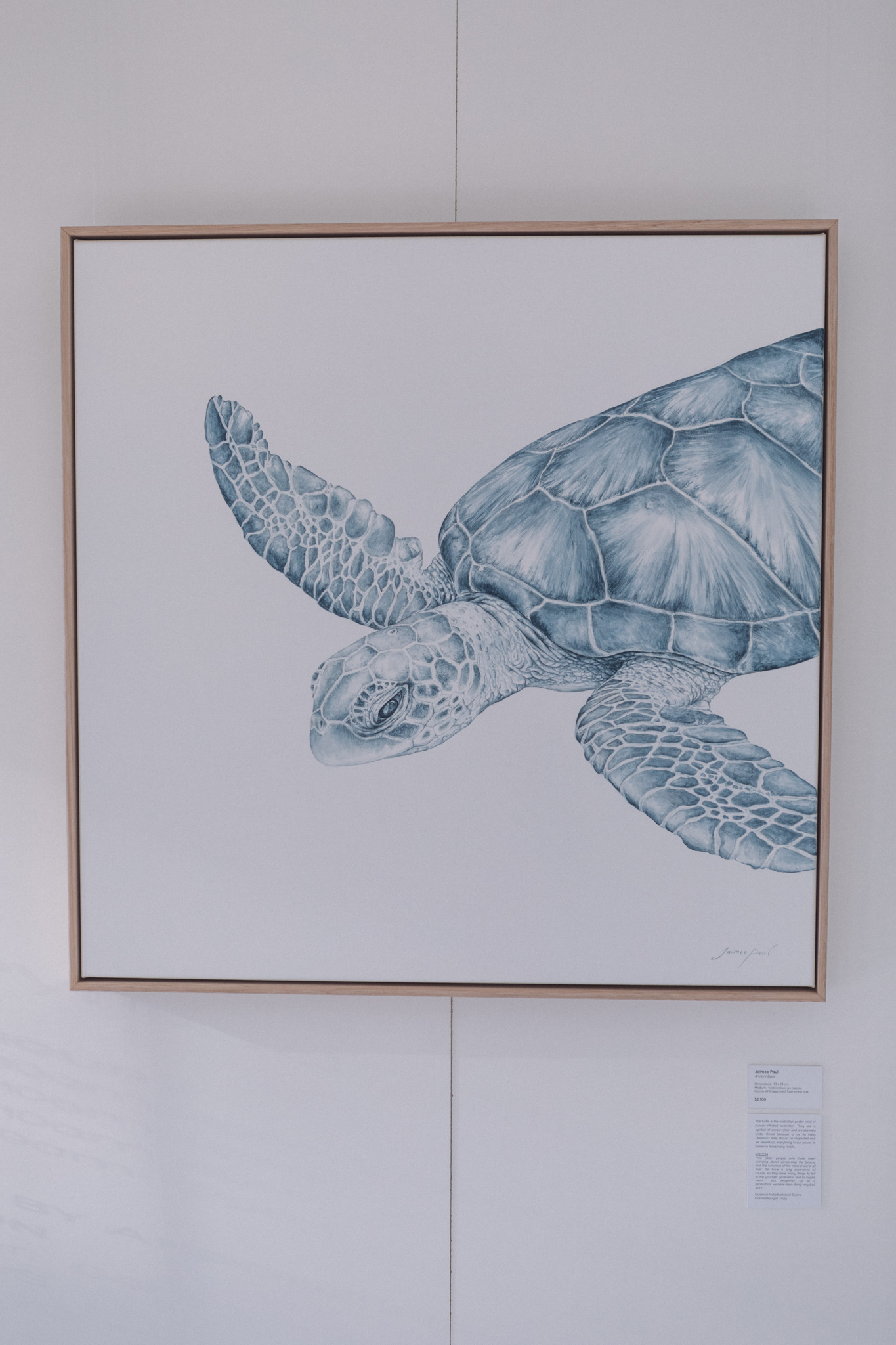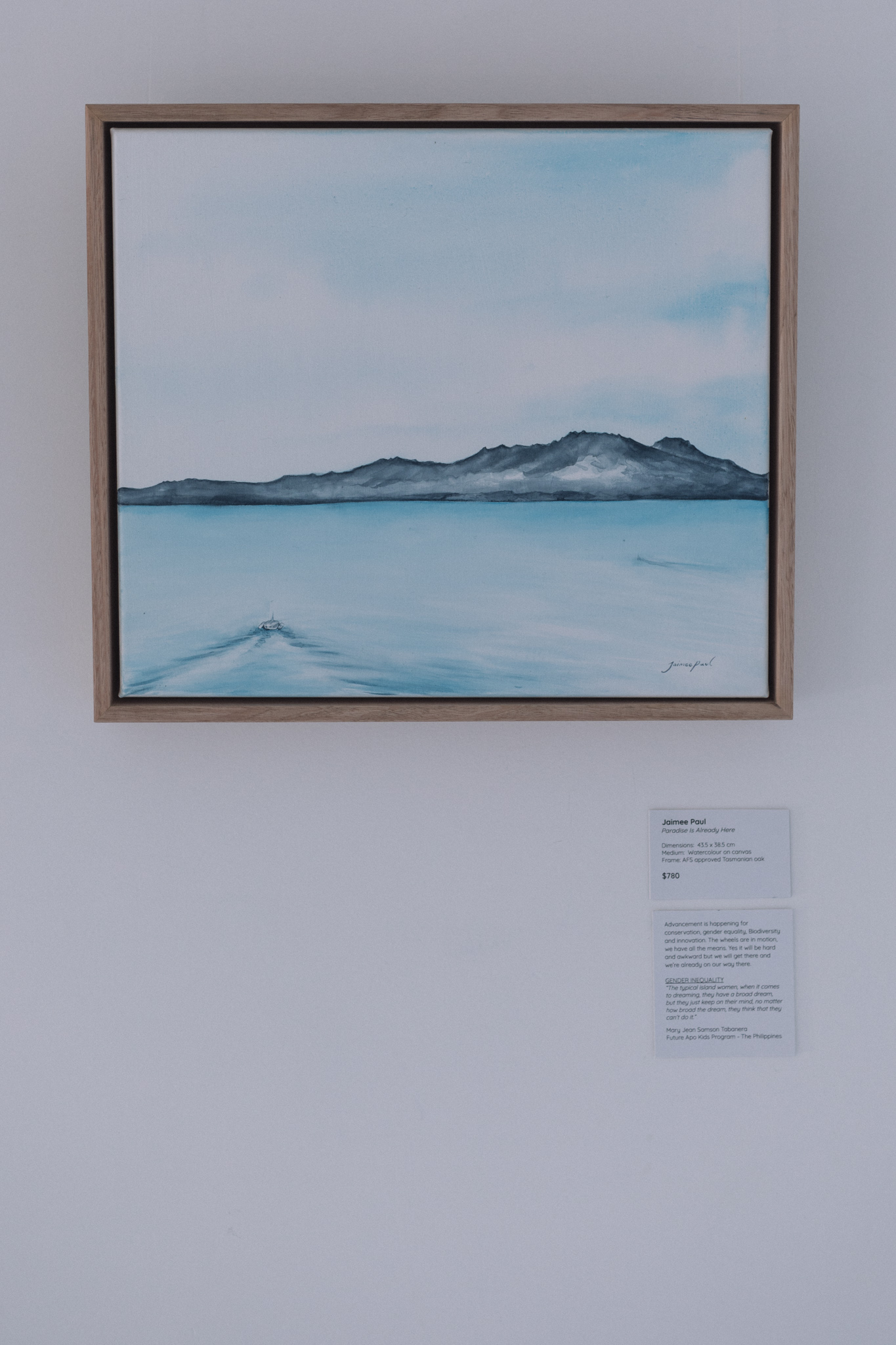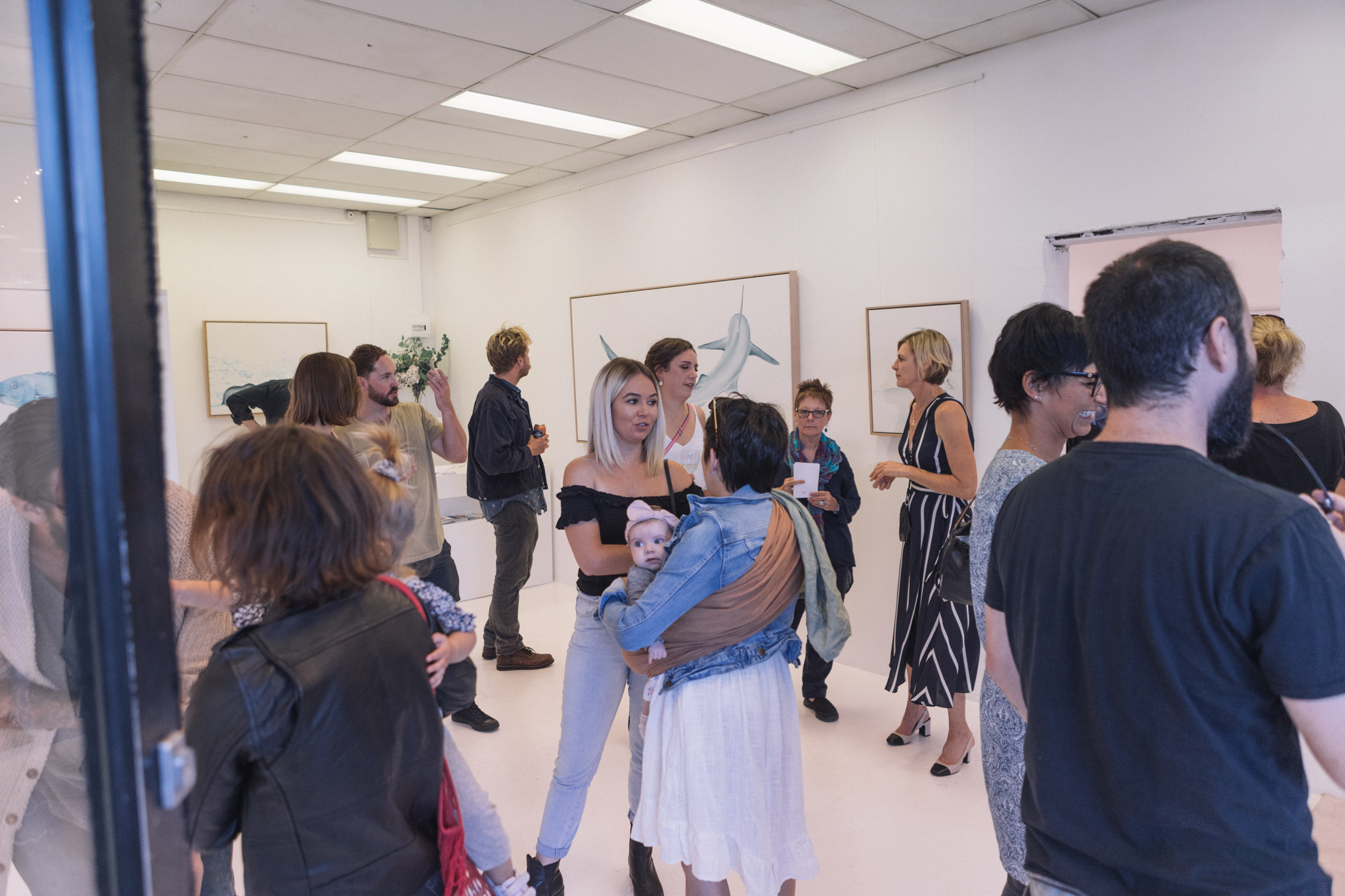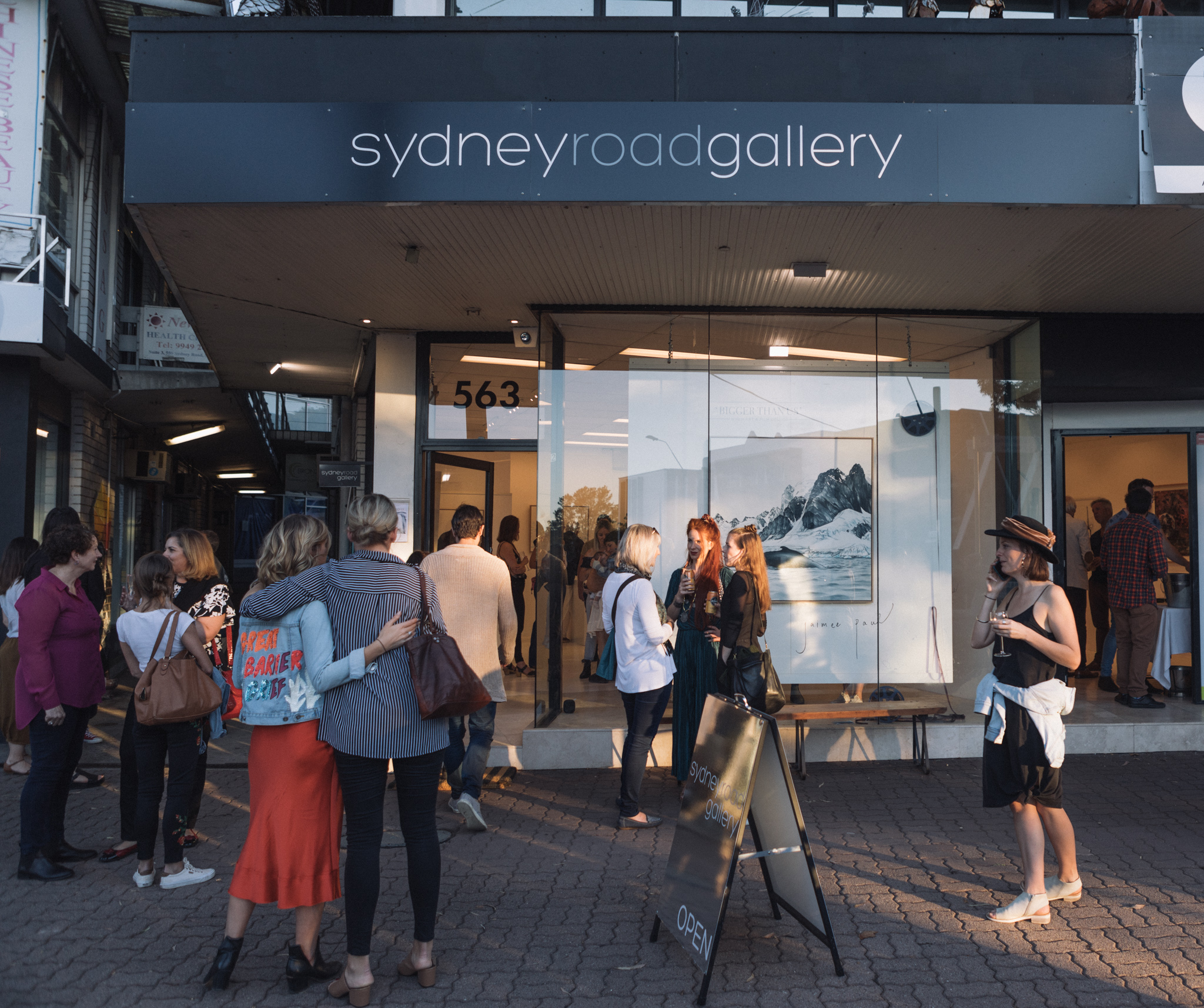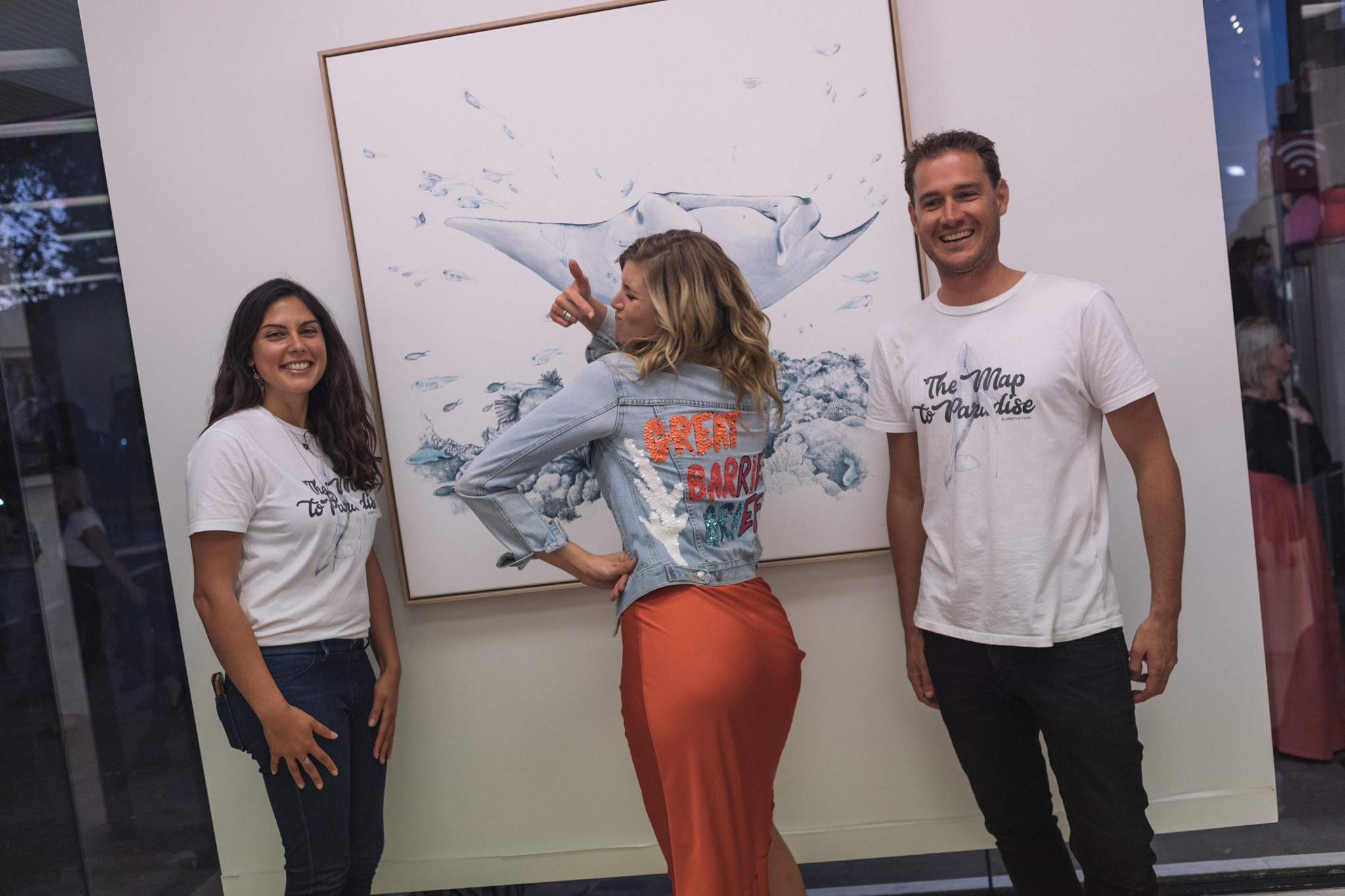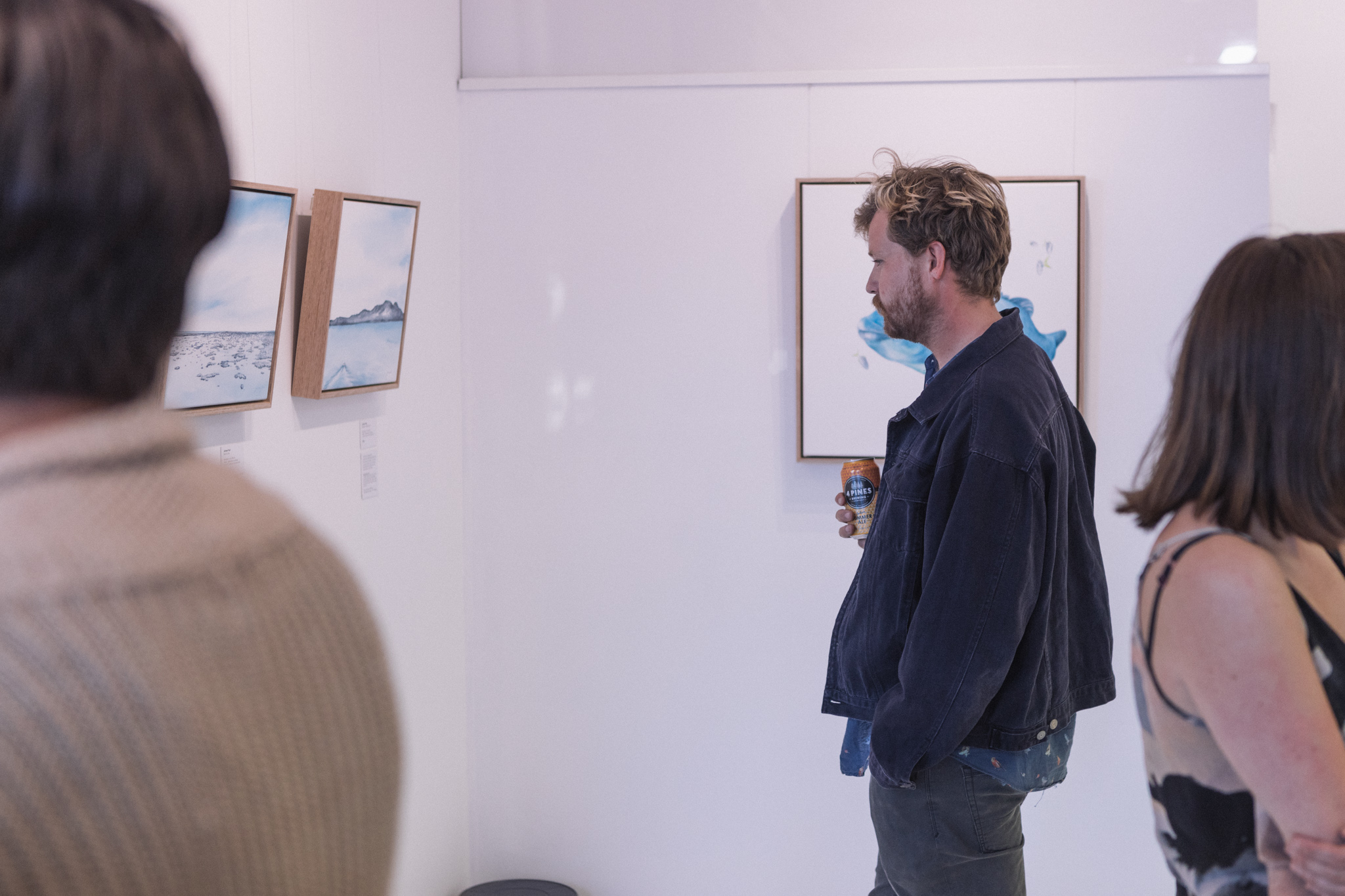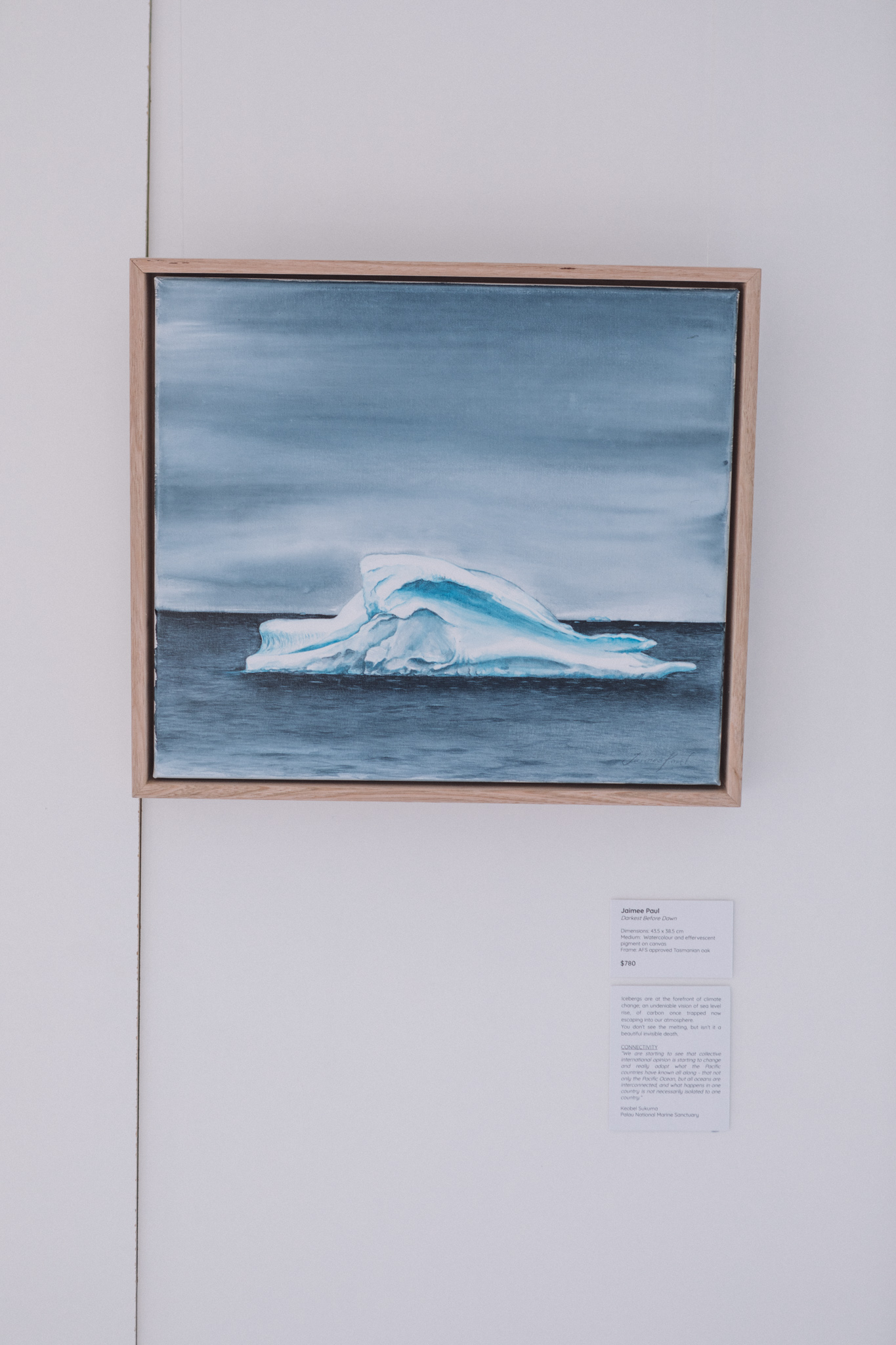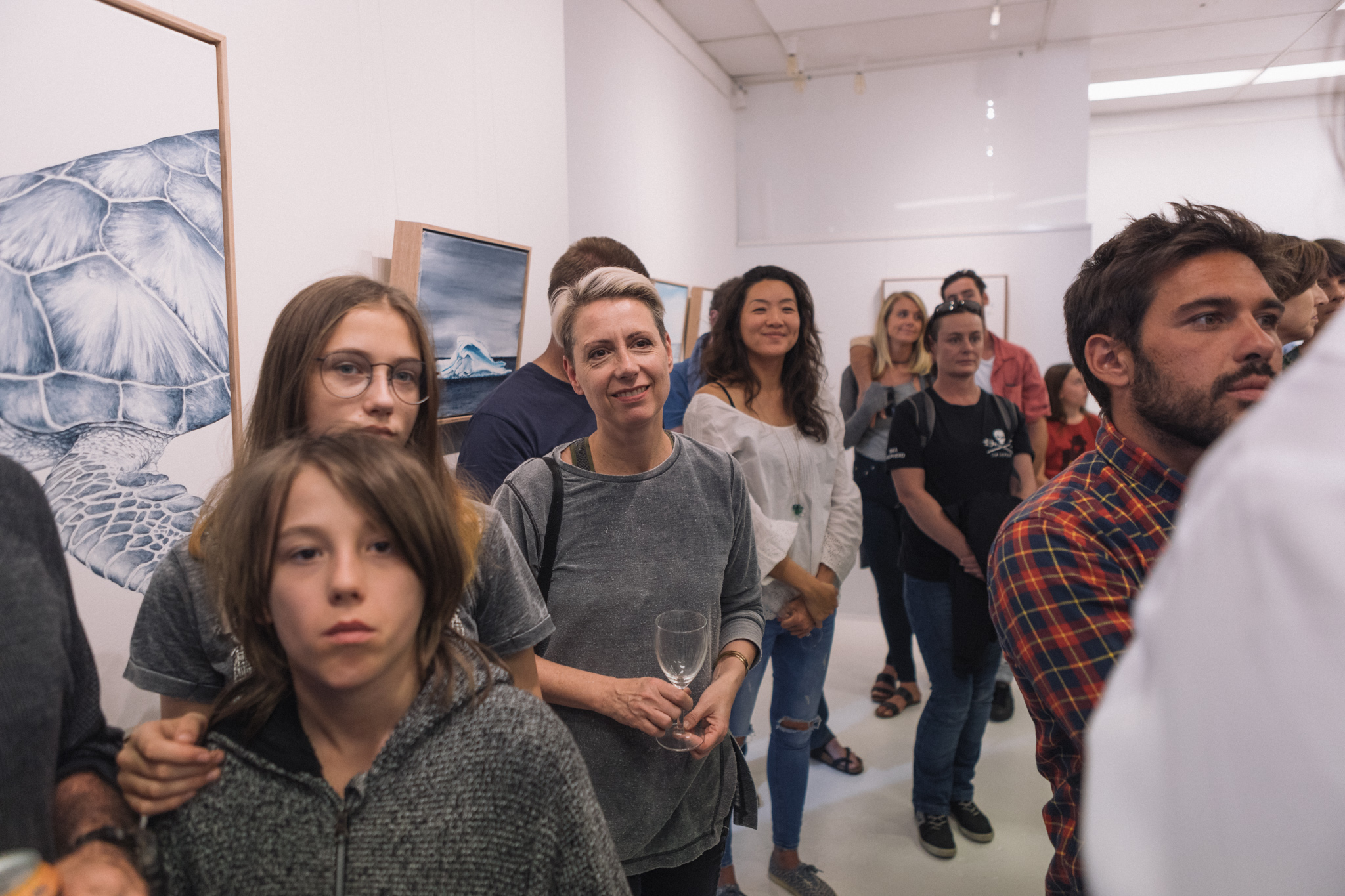Artist Jaimee Paul has an obsession with Paynes Grey. This is her choice of colour used in a new series of artworks, depicting b-roll of nature from The Map to Paradise, including images of ice bergs, the reef, a sea turtle, seals, penguins, a manta ray, whales and fish. After seeing The Map to Paradise at the private avant-screening for Sydney, she came up with the novel idea of her ‘Bigger Than Us’ exhibition, donating 10 per cent of profits back to The Map to Paradise and its education campaign.The exhibition is on now until 16 June 2019 at the Sydney Road Gallery. Please see the catalogue HERE, if you are interested in purchasing an artwork. The proceeds will go towards securing film classification, so The Map to Paradise can be seen by a wider audience.
Interview with artist Jaimee Paul…
Tell us about your style and why you chose to adopt it?
I paint in watercolour on canvas, realistic portraits of animals, usually in black and white. Using just one colour helps to transport me inside of the painting, with the rhythm, the repetition of painting with one colour becomes a bit of a trance. I believe it helps the soul of my subject to come out.
I work on canvas, because it’s an unusual medium for watercolour. I fell in love with the techniques I use now when I experimented for a show back in 2012. I paint animals, because, one, I’m obsessed and, two, art has the power to connect people to nature on a personal level. I choose to show the beauty of beings, to help people feel a deeper empathy for the subject.
Why do you think your approach works when it comes to engaging people about environmental issues? Can you give us an example?
The world can be an overwhelming place. You go to Facebook or turn on the TV and we see so much tragedy. There’s so much of it. We are experiencing a state of content overload. Art, however, makes you stop for a moment. It brings joy. It can be uplifting. And, if there’s positivity around the artwork, then the viewer will often feel some sort of connection to it, whatever that might be.
For example, I created an ocean-themed group show a few years back called Ninetyfive Percent. Each artist created beautiful ocean artworks and besides each artwork, we placed a fact about the ocean, both good and bad things, so the viewer felt a deeper connection to the artwork.
Tell us about Art for Purpose? What are some of its achievements.
The concept of Art for Purpose developed in my head over the span of my university degree. I have always had a passion for nature and animals and, in doing concept after concept for projects, I realised I was always creating works about the ‘bigger picture’, the meaning of things.
Art for Purpose is about turning away from ‘art for arts sake’, to creating a work which means something to me as an artist about an issue that needs attention, such as our beautiful Great Barrier Reef.
For example, my earlier project, Ninetyfive Percent, was to raise awareness on coral bleaching and ocean warming. I donated money back to charity.
My current Art for Purpose project, Bigger Than Us, is a collaboration using b-roll stills of the making of The Map to Paradise. So with that, and like my other shows, 10 per cent of profits will go back into the project to help it to grow and grow.
For those wanting to use art or photography or film as a medium for change, how does one get by? Surely, it is a struggle to pay the bills in a city like this? Any tips?
Have a side-hustle. For me, I teach art classes in my studio. I paint pet portraits for people and commissions and I work two days a week in a school, before that it was restaurants. To depend 100 per cent of my income on my art is a dream. It is what I am working towards, but I am also aware that the pressure of trying to be financially dependent on doing what you love can take away the heart and soul of it. Artists do art for the passion, not the profit. And, we are happier because of it. Spending a bit of time away from art to earn a regular income is also a much needed break for me. (I wouldn’t, however, say no to a patron offering to support my art career! I feel like it would only improve the work I could do).
For those out there wanting to be a part of the movement to protect nature - whether as an artist or in another form, such as an educator, business person, politician or scientist, but who are unsure about their identity and what sort of approach they want to take - can you give them some advice on how to find their passion, ‘their calling'?
Just start working on one thing. My favourite quote is by Maya Angleou, “do what you know until you know better. Once you know better, do better.” Everyone is on their own journey and it might take you years to find the thing that you feel is your calling, but ‘doing’ and ‘finding’ and ‘trying’ and ‘collaborating’ on the way is still doing something.
I would say, don’t take it all on board alone. There are communities and groups you can contribute to and learn from. It is also an opportunity to meet new people.
Tell us about ‘Bigger Than Us’.
I am painting in large and small-scale ocean stills from The Map to Paradise. It is a bit different from my usual works. I usually just work in black and white and only with animals, but this time I am using my favourite colour, Paynes Grey. It also includes landscapes, such as icebergs, because you can’t show the ocean without the ocean - it is blue.
Who are your role models? Who are you inspired by?
My role models are those that don’t let fear get in their way. I admire Ocean Explorer Sylvia Earle and TV Presenter David Attenborough. They show the beauty, they show the positives in the life - the things worth protecting. I also admire Zaria Forman, a large-scale pastel artist from the United States, who travels to the Arctic, giving proceeds to charity and collaborating with organisations - just like I do.


